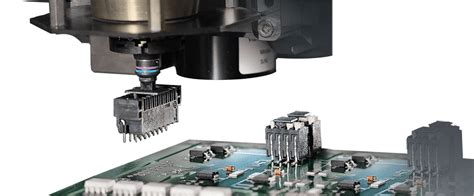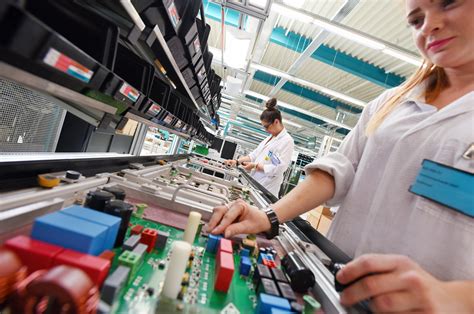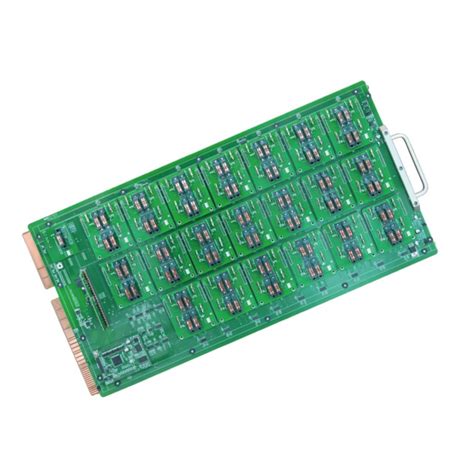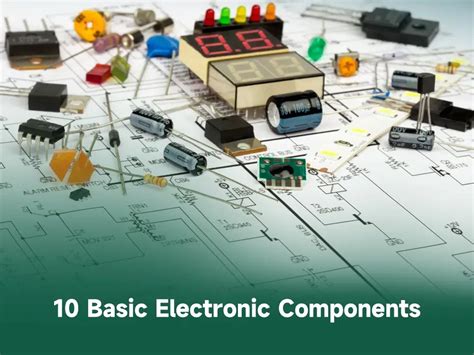Mastering Assembly SMT: The Future of Precision Electronics Manufacturing
Key Takeaways
Understanding Surface Mount Technology (SMT) is crucial for anyone involved in pcb assembly processes. This method of assembling electronic components directly onto the surface of printed circuit boards (PCBA) has revolutionized the manufacturing landscape by providing several advantages over traditional through-hole methods. One significant takeaway is the emphasis on automation in SMT, which not only enhances efficiency but also ensures higher levels of precision during manufacturing. By employing advanced machinery and software solutions, companies can achieve faster production cycles and maintain rigorous quality standards.
Furthermore, mastering SMT can lead to substantial cost reduction strategies, which are vital for businesses aiming to improve their bottom line. With tighter competition in the electronics industry, companies are increasingly adopting innovative techniques and tools that leverage SMT to stay ahead. Emerging trends highlight the growing significance of automation, which empowers manufacturers to adapt quickly to market shifts and customer demands. Real-world applications demonstrate how entities successfully integrate SMT into their workflow, showcasing its role as an essential component in achieving operational excellence.
Understanding these key factors positions organizations to meet future challenges effectively and harness the full potential of SMT, thereby ensuring they remain competitive within the dynamic realm of electronics manufacturing.
Understanding Surface Mount Technology: A Comprehensive Overview
Surface Mount Technology (SMT) represents a pivotal shift in the realm of pcb assembly and pcba manufacturing, characterized by the direct mounting of electronic components onto the surface of printed circuit boards. This technique facilitates a denser layout of components, significantly optimizing space and enhancing the performance of electronic devices. As the industry evolves, understanding the fundamental principles behind SMT is crucial for companies aiming to innovate and streamline their production processes.
At its core, SMT utilizes a variety of components known as surface mount devices (SMDs), which can be smaller and lighter than their through-hole counterparts. The absence of need for drilling holes in pcb assembly allows manufacturers to use both sides of the board more effectively, leading to reduced production time and costs. Moreover, advancements in solder paste application techniques have improved accuracy in component placement, resulting in high-yield production cycles.
The shift towards SMT has also led to a growing emphasis on automation within electronics manufacturing. Automated placement machines are now commonplace, allowing for rapid changes in production and flexibility to adapt to varying design specifications. These machines utilize sophisticated vision systems that ensure precise alignment of components—an essential factor when working with high-density pcba designs.
The benefits of adopting SMT extend beyond mere space-saving; they include enhanced electrical performance due to shorter connection paths and improved thermal management. For companies committed to maintaining competitive advantage in a rapidly evolving electronics landscape, grasping the nuances of Surface Mount Technology is not just beneficial—it’s imperative for future success.
| Key Characteristics | Benefits |
|---|---|
| High Component Density | Maximizes board space utilization |
| Automated Placement | Increases speed and accuracy |
| Reduced Weight | Enhances portability |
| Lower Production Costs | Improves overall profitability |
The integration of these elements positions SMT as a foundational technology that will continue to shape the landscape of precision electronics manufacturing in the years ahead. Understanding these dynamics is essential for companies looking to innovate within their processes while adhering to industry standards and consumer demands.
Key Components of SMT Assembly Processes
Surface Mount Technology (SMT) has revolutionized the landscape of pcb assembly and pcba through its innovative assembly processes. At the heart of these processes are several key components that enhance the reliability and efficiency of electronics manufacturing. The first vital component is the printed circuit board (PCB) itself, which serves as the foundation for mounting various electronic components. Next, surface mount components such as resistors, capacitors, and integrated circuits are utilized; these components are designed for direct mounting on the surface of the PCB, which helps to conserve space and improve circuit performance.
Additionally, advancements in soldering techniques, such as reflow soldering and wave soldering, play a crucial role in ensuring strong electrical connections. Employing automated equipment for these tasks not only speeds up production but also minimizes errors that can arise from manual handling. Moreover, implementing automated optical inspection (AOI) systems guarantees that each assembly is thoroughly checked for defects before final packaging.
“Investing in high-quality materials and equipment is critical for manufacturers to enhance their capabilities in SMT assembly.” This approach not only reinforces product integrity but also translates into reduced production costs over time. Overall, understanding these key components is essential for anyone looking to master SMT processes, as they provide a framework for developing efficient manufacturing strategies while ensuring high-quality outputs in the competitive world of electronics production.
Automation in SMT: Enhancing Efficiency and Precision
The integration of automation in Surface Mount Technology (SMT) has revolutionized the pcb assembly process, ushering in an era marked by unprecedented levels of efficiency and precision. By leveraging advanced machinery and robotics, manufacturers can significantly enhance the speed at which printed circuit board assemblies (PCBA) are produced, minimizing human error that often plagues manual assembly lines. Automation not only streamlines the workflow but also enables high-throughput operations, allowing manufacturers to meet the increasing demand for faster production cycles without sacrificing quality. Furthermore, sophisticated software solutions facilitate real-time monitoring and adjustment of assembly parameters, ensuring that each component is placed with meticulous accuracy. As such, companies embracing automation soon discover a marked reduction in costs associated with rework and waste, while simultaneously improving their competitiveness within the electronics sector. The shift towards automated SMT processes also represents a natural evolution towards Industry 4.0 principles, where connectivity and data analytics drive decision-making and operational efficiency. Ultimately, the mastery of automation in SMT is not merely a strategic advantage but a fundamental necessity for firms striving to thrive in today’s fast-paced electronics manufacturing landscape.
Cost Reduction Strategies through SMT Mastery
Mastering Surface Mount Technology (SMT) offers significant opportunities for cost reduction in pcb assembly processes. By leveraging advanced automation and precision techniques, companies can streamline their pcba operations, which directly contributes to lowering production costs. For instance, the implementation of automated pick-and-place machines can dramatically enhance throughput while minimizing the potential for human error. This not only leads to decreased materials wastage but also improves product reliability, thereby reducing costs associated with post-production repairs.
Furthermore, optimizing the assembly line layout with a focus on efficient SMT processes can lead to better space utilization and faster processing times. This reduction in cycle time can be critical for businesses aiming to meet high-volume demand without compromising on quality. Additionally, investing in high-quality soldering machines and inspection technology ensures that defects are identified early in the process, which mitigates the costs associated with rework and scrap.
Another key strategy involves embracing emerging tools and techniques that further enhance productivity. By continually evaluating new technologies and adopting best practices within the industry, organizations can position themselves advantageously in an increasingly competitive landscape. Ultimately, achieving mastery in SMT not only supports cost-cutting initiatives but also fosters a culture of continuous improvement that drives long-term success in electronics manufacturing.
Emerging Trends in Electronics Manufacturing: The Role of SMT
The emergence of Surface Mount Technology (SMT) has marked a significant shift in the realm of electronics manufacturing. One of the primary drivers behind this evolution is the increasing demand for PCB assembly processes that prioritize efficiency and precision. As products become more compact and technologically advanced, the need for high-density assembly has never been greater. The integration of SMT allows manufacturers to place electronic components directly onto the surface of printed circuit boards (PCBA), leading to a reduction in size and weight while enhancing performance.
Additionally, automation plays a pivotal role in shaping the future landscape of SMT. Advanced machines and robotics have revolutionized how components are placed on PCBs, drastically increasing production speed while maintaining extraordinary precision. Through sophisticated algorithms and real-time data analysis, manufacturers can streamline their workflows, driving down costs and raising the quality standards in production.
Looking ahead, SMT is not just about meeting present demands but also about preparing for future challenges in electronics manufacturing. It paves pathways for adopting new materials and techniques that align with eco-friendly practices. As companies embrace these emerging trends, they must prioritize mastering SMT to thrive in this competitive environment, ensuring they remain at the forefront of innovation in electronics manufacturing.
Tools and Techniques Shaping the Future of SMT Assembly
As the electronics industry continues to evolve, the tools and techniques used in Surface Mount Technology (SMT) assembly are undergoing significant advancements. The integration of sophisticated software solutions has streamlined the pcb assembly process, enhancing both accuracy and speed. Innovative equipment such as automatic pick-and-place machines now offer impressive capabilities for high-volume production, allowing manufacturers to achieve remarkable levels of precision in pcba operations. Additionally, advanced inspection technologies, including automated optical inspection (AOI), are becoming essential for maintaining quality control and ensuring that every component is correctly placed, thus reducing the likelihood of defects.
Moreover, as sustainability becomes a greater concern, new techniques aimed at minimizing waste and optimizing material usage are being adopted. Techniques such as selective soldering not only improve efficiency but also contribute to a greener manufacturing process. The adoption of real-time data analytics allows for continuous monitoring and adjustment of production parameters, further enhancing productivity and ensuring that SMT assembly stays competitive in a rapidly changing environment. Embracing these state-of-the-art tools is crucial for companies striving to master SMT and meet the increasing demands of today’s electronic devices.
Case Studies: Successful Implementations of SMT in Industry
The practical application of Surface Mount Technology (SMT) has shown remarkable outcomes across various industries, highlighting its potential for enhancing PCB assembly (pcba) processes. For instance, Company X, a leading manufacturer of consumer electronics, adopted SMT techniques to streamline their production line. The integration of automated pick-and-place machines allowed them to not only improve the speed of their pcb assembly but also significantly enhance the placement accuracy of components on printed circuit boards. This transition resulted in a substantial reduction in operational costs and waste, showcasing how efficiency can transform manufacturing dynamics.
Similarly, Company Y in the automotive industry utilized SMT to optimize their vehicle control systems. By employing advanced soldering techniques and innovative component layouts typical of pcba, they achieved enhanced reliability and performance metrics. Their case study indicates that embracing SMT not only minimizes defects but also meets the rapidly increasing demand for high-quality automotive electronics. Furthermore, Company Z focused on leveraging SMT for telecommunications equipment, where fast-paced technological advancement is critical. They reported an impressive reduction in lead times while maintaining stringent quality standards through superior automation processes in their PCB assembly lines.
These case studies illustrate that successful implementations of SMT provide substantial benefits that extend beyond mere cost savings; they contribute to fostering innovation and meeting market demands effectively. As industries increasingly recognize the value of mastering Surface Mount Technology, they position themselves as competitive players in an ever-evolving landscape where precision electronics manufacturing is paramount.
Preparing for the Future: What Companies Need to Know About SMT
As industries continue to evolve, understanding Surface Mount Technology (SMT) is imperative for companies aiming to thrive in the competitive landscape of electronics manufacturing. The shift towards pcb assembly and pcba processes demands a comprehensive grasp of the key components involved in these assembly methods. With advancements in automation, companies can enhance efficiency, achieving faster production cycles while maintaining high precision. The integration of cutting-edge tools and techniques into the SMT assembly processes not only reduces labor costs but also mitigates the risks commonly associated with manual methods. As organizations prepare for the future, adapting to emerging trends in electronics manufacturing becomes crucial; these trends often dictate changes in consumer demand and technological capabilities. Therefore, mastering SMT is no longer just an option but a necessity for manufacturers who wish to excel and maintain their competitive edge. Whether it involves understanding advanced machinery or implementing innovative strategies, staying informed about developments in SMT will be pivotal for long-term success in the electronics sector.
Conclusion
In summary, mastering Surface Mount Technology (SMT) is crucial for companies operating within the ever-evolving landscape of electronics manufacturing. As we have explored throughout this article, the integration of automation within the SMT assembly process not only enhances efficiency but also ensures high levels of precision in the production of pcb assemblies. Companies that focus on optimizing their SMT processes can significantly mitigate costs and improve overall product quality. Additionally, staying abreast of emerging trends and adopting the latest tools and techniques will enable manufacturers to adapt to market demands effectively. The case studies examined reveal practical applications of SMT that have successfully driven innovation across various industries, highlighting its importance for maintaining a competitive edge. As businesses look forward to the future, understanding and implementing advanced SMT techniques will be pivotal in achieving sustainable growth in the realm of pcba. Ultimately, embracing these advancements not only prepares organizations for challenges ahead but also positions them to thrive in a technology-driven world.
FAQs
Frequently asked questions about Surface Mount Technology (SMT) and PCB assembly often lead to a better understanding of its role in modern electronics manufacturing. One of the most common inquiries revolves around the advantages of SMT over traditional methods. The primary benefit is the ability to create more compact and efficient designs, making it ideal for small electronic devices. Additionally, many wonder about the compatibility of SMT with various PCBA processes. The good news is that SMT seamlessly integrates into diverse manufacturing setups, enhancing speed and reducing assembly costs.
Another notable question pertains to the reliability of SMT components compared to through-hole components. With technological advancements, SMT has proven to be equally reliable, if not more so, due to improved soldering techniques such as lead-free soldering and advanced inspection technologies like automated optical inspection (AOI). Companies are also curious about how automation can further enhance their PCB assembly processes, as automated systems not only boost efficiency but also minimize human error.
Lastly, readers often seek guidance on how they can prepare for future trends in electronics manufacturing involving SMT. Staying updated on the latest innovations and evolving practices is crucial in maintaining a competitive edge. This includes investing in training for personnel and adopting advanced tools that streamline production.
For more detailed information about PCB assembly and enhancing your mastery over these technologies, please click here: Andwin PCB Assembly.







